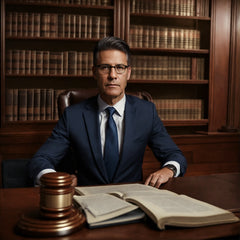Your cart is empty now.

Sounds trademarks are becoming more popular with video
- 03 April, 2024
- Nyall Engfield
Sound trademarks represent one of the most intriguing and dynamic areas of intellectual property law, highlighting the evolution of branding practices in response to changing market landscapes and consumer interactions. Traditionally, trademarks were thought to be confined to visual symbols, words, or phrases that distinguish the goods or services of one enterprise from those of others. However, as businesses have sought to engage customers on multiple sensory levels, the concept of sound trademarks has gained prominence. These are marks where sound is used to identify the origin of products or services, akin to how a logo identifies a brand.
Sound marks can be registered as trademarks, and they may be inherently distinctive. However, they must be non-functional to be eligible for federal registration. When a sound is proposed for registration as a mark on the Principal Register, for goods that make the sound in their normal course of operation, registration is available only on a showing of acquired distinctiveness under Section 2(f) § 11.02 The Lanham (Trademark) Act and Advertising.
Understanding Sound Trademarks
A sound trademark, also known as an aural mark, is a sound or series of sounds that, when heard, are unmistakably associated with a particular source of goods or services by the consuming public. This can range from a few musical notes, a jingle, or even a unique non-musical sound that functions as a brand identifier. The MGM lion’s roar, the NBC chimes, and the Intel bong are quintessential examples of sounds that have transcended mere auditory signals to become key brand assets.
The Legal Framework for Sound Trademarks
The legal recognition of sound trademarks varies by jurisdiction, but many countries, including the United States, European Union member states, and others, allow for the registration of sounds as trademarks. In the United States, the Lanham Act does not explicitly mention sound trademarks, but the United States Patent and Trademark Office (USPTO) has established guidelines for their registration. The key criterion is distinctiveness—the sound must serve as a "source indicator" for the goods or services in question.
Applicants for sound marks need not submit a drawing of the mark, but must describe the sound mark clearly on the application. They must submit the specimen in an electronic file, in .wav, .wmv, .wma, .mp3, .mpg, or .avi format, and the reproduction may not be over 5 MB for audio files and 30 MB for video files
The Challenge of Distinctiveness
One of the principal challenges in registering a sound trademark is proving that the sound has acquired distinctiveness or secondary meaning. This is particularly true for sounds that could be considered inherently functional or generic in a given context. The USPTO requires that applicants demonstrate that the sound has become closely associated with their goods or services through substantial and continuous use. This often necessitates providing evidence such as marketing data, consumer surveys, and documentation of the sound's use in commerce.
In an infringement case, sound marks will fare just as regular word and logo marks. Courts will likely find the highly distinctive ones to be stronger and the more commonplace ones to be weaker
Notable Examples and Precedents
Several landmark cases and examples highlight the trajectory and potential of sound trademarks. Perhaps the most famous is the NBC chimes, one of the earliest sounds to be registered as a trademark in the United States. Another iconic example is the aforementioned Intel bong, which, through consistent and global advertising, has become synonymous with the brand. These cases underscore the potential of sounds to serve as powerful brand identifiers, transcending language and cultural barriers.
Application and Registration Process
The process of applying for a sound trademark requires the submission of a sound file along with the application, a detailed description of the sound, and evidence of its distinctiveness. The sound must be graphically represented, which, for sound marks, involves providing a sonogram or a detailed description that sufficiently identifies the sound’s characteristics. The application must also specify the goods or services with which the sound is used. We regularly file sound trademarks and can help with the process.
Practical Considerations for Businesses
For businesses considering the registration of a sound trademark, several practical considerations come into play. These include the strategic selection of sounds that can be clearly associated with the brand, investment in marketing to build consumer association between the sound and the brand, and vigilance in protecting the sound from unauthorized use. The latter is crucial, as sound trademarks, like their visual counterparts, are subject to infringement and dilution.
Because trademark rights are based on use, federal registration is not required. However, if a mark is used in interstate commerce, the owner can apply for registration in the U.S. Patent and Trademark Office. Registration provides the mark owner with a number of important benefits. Perhaps the most significant is that registration constitutes "constructive use" of the mark nationwide.
The Role of Technology
The rise of digital media and technology has significantly impacted the use and protection of sound trademarks. With the proliferation of digital platforms, sounds can quickly become viral, enhancing their brand association but also increasing the risk of unauthorized use. Technology also offers new methods for registering, monitoring, and enforcing sound trademarks, from digital databases for trademark search to software that can identify sound marks in use across various media.
Global Considerations
The global nature of commerce today necessitates an understanding of sound trademark protection in multiple jurisdictions. While many countries recognize sound trademarks, the criteria for registration and the protection afforded can vary. Companies must navigate these differences, potentially securing registrations in key markets to ensure comprehensive protection for their sound marks.
Challenges and Critiques
Sound trademarks are not without their critics and challenges. Some argue that the expansion of trademark protection to include sounds can lead to over-commercialization of common auditory elements. There is also the challenge of sound trademarks becoming too generic over time or losing their association with the original brand.
Future Perspectives
Looking forward, the domain of sound trademarks is poised for further evolution. As brands continue to seek multi-sensory engagement with consumers, the importance of sound as a branding tool will likely increase. This could lead to more creative uses of sound in branding and more nuanced legal frameworks to accommodate the unique aspects of aural branding.
Sound trademarks represent a fascinating intersection of law, branding, and consumer psychology, offering businesses a unique means of securing brand identity in a crowded marketplace. The journey from selecting a distinctive sound to achieving legal protection and maintaining that protection is complex, requiring a strategic approach and careful navigation of the legal landscape. As the marketplace continues to evolve, sound trademarks will undoubtedly play an increasingly significant role in how businesses differentiate themselves and connect with consumers on an emotional and psychological level.
Search
Archive
- January 2026



